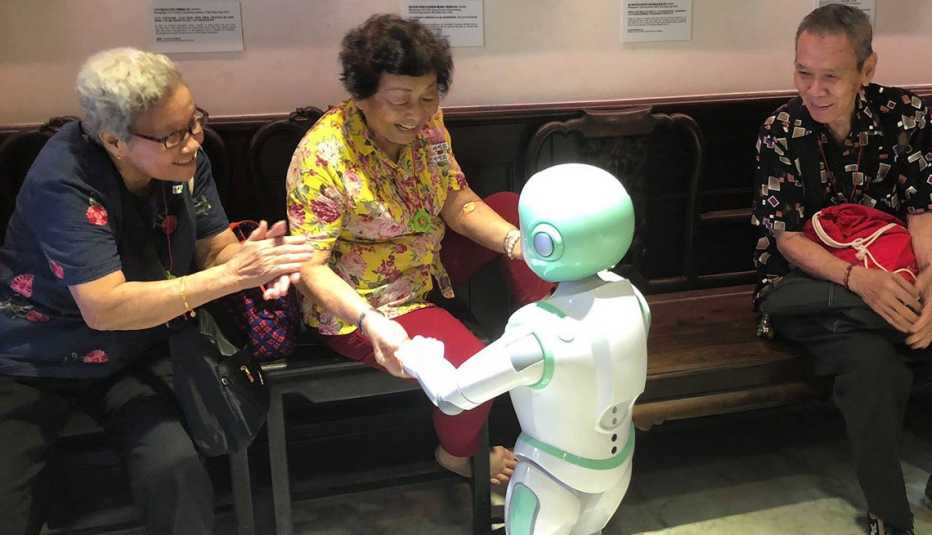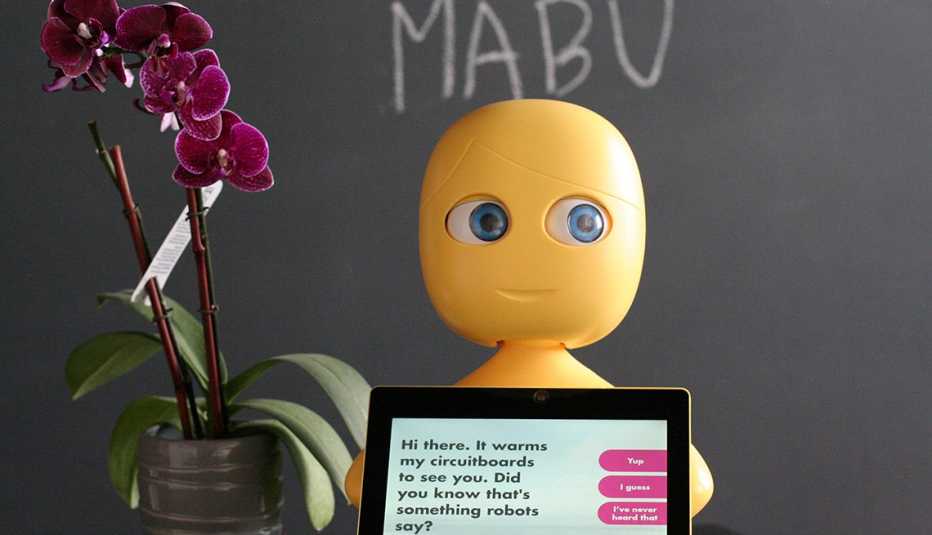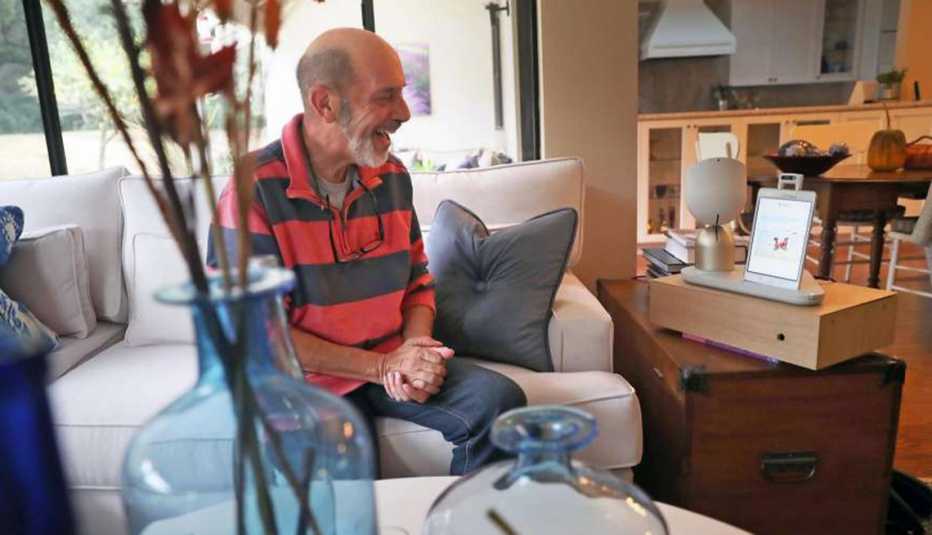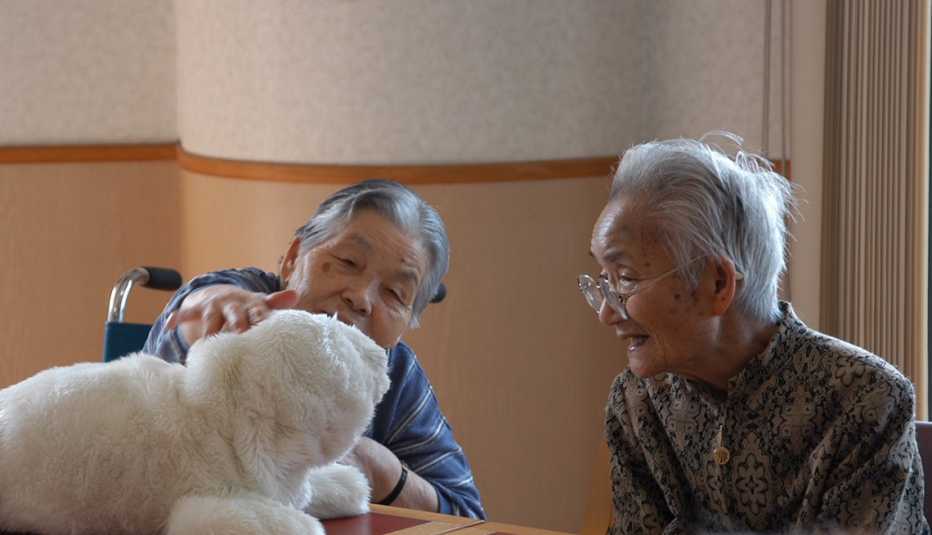AARP Hearing Center
During August’s World Robotics Conference in Beijing, humanoids that resembled a shorter, cuter, white C-3PO sang, danced and told stories.
Those cartoonish-looking iPal robots (below) elicited smiles and laughs. Yet, they and their mechanical brethren may soon fulfill a serious mission: keeping those older Americans healthy, active and alert.
Companies around the world are investing in “socially assistive" robots — they assist through social interaction, not physical interaction, and can help with the caregiving concerns of an aging population. From AvatarMind's iPal, which could eventually monitor for falls, and Catalia Health's Mabu, who can ask questions like a nurse, to a plush seal that improves the mood of users, these robotic assistants may be increasingly marketable in a world where caregiver shortages in the U.S. are expected to reach nearly 450,000 by 2025.


The iPal’s elder-focused software is still being developed, but it may soon be able to remind you to take medicine and provide entertaining content, mind-stimulating puzzles and more. Once on the market, it would join other socially assistive robots such as the aforementioned Mabu and Intuition Robotics’ ElliQ, both of which are already coaching and educating older U.S. adults to good health.
“I do see a lot of promise in this,” says William Dale, M.D., a geriatrician and palliative medicine specialist at City of Hope National Medical Center. He can envision devices helping with tasks such as reminding patients to take medicines, to eat or go for a walk. “I imagine it being useful, especially if they are in the early stages of physical or cognitive decline,” he says. Yet, he adds, people also need the empathy and kindness that come from other humans. “The social benefits of that are hard to replace,” he says, noting that there are limits to what any device driven by algorithms can do. “There are some things that require human judgement.”
Globally, the number of people 60 and older is expected to skyrocket from 962 million in 2017 to 2.1 billion in 2050, according to the United Nations. At the same time, countless people regularly use technology such as smartphones, Google Homes and Amazon Echos to enhance their lives.
“Technology is much more ubiquitous today,” says Cory Kidd, Catalia Health's founder and CEO. “It’s the right place and time to use [robots] like this” to aide the larger community.


Mabu (above), a 15-inch yellow robot with large round eyes is currently focused on helping patients with congestive heart failure, by tracking medications and activity level. Through a new working relationship with the American Heart Association, Mabu now has access to all the AHA's scientific-based guidelines to better inform patient interaction. Later iterations will assist with late-stage kidney cancer and rheumatoid arthritis, Kidd says.



































































More From AARP
How to Find a Caregiver Support Group That's Right for You
In-person or online, communities can offer valuable help